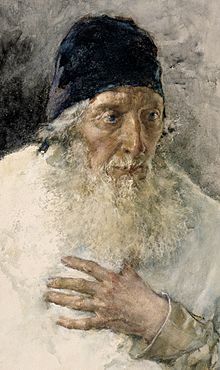Marin Falier
|
His Serenity Marino Faliero |
|
|---|---|

Marino Faliero, Dux LV by Francisco Pradilla Ortiz (1883, Museo del Prado)
|
|
| 55th Doge of Venice | |
|
In office 11 September 1354 – 15 April 1355 |
|
| Preceded by | Andrea Dandolo |
| Succeeded by | Giovanni Gradenigo |
| Personal details | |
| Born | 1274 Venice, namesake Republic |
| Died | 17 April 1355 (aged 81) Venice, namesake Republic |
| Spouse(s) | Tommasina Contarini Alvica Gradenigo |
| Children | Lucia Pinola |
| Profession | Patrician, statesman |
Marino Faliero (1274 – 17 April 1355) was the 55th Doge of Venice, appointed on 11 September 1354.
He was sometimes referred to simply as Marin Falier (Venetian rather than standard Italian) or Falieri. He was executed for attempting a coup d'etat.
Faliero was a naval and military commander and then a diplomat before being elected doge in succession to Andrea Dandolo. The populace of Venice was at that time disenchanted with the ruling aristocrats who were blamed for a recent naval defeat by the fleet of the Republic of Genoa at the 1354 Battle of Portolungo during the Third Venetian–Genoese War. Faliero learned of his election while he was on a diplomatic mission to the papal court at Avignon.
Within months of being elected, Faliero attempted a coup d'etat in April 1355, aiming to take effective power from the ruling aristocrats. According to tradition, this came about because the dogaressa, Faliero's second wife, Aluica Gradenigo, had been insulted by Michele Steno, a member of an aristocratic family, but in a study of doges of Venice Antonella Grignola suggests that Faliero's move was consistent with a prevailing trend in Italian cities to move away from oligarchic government to absolute, dynastic rule.
The plot was badly organised, with poor communication between the conspirators, and was quickly discovered. Faliero pleaded guilty to all charges and was beheaded and his body mutilated. Ten additional ringleaders were hanged on display from the Doge's Palace in St Mark's Square.
Faliero was condemned to damnatio memoriae, and accordingly his portrait displayed in the Sala del Maggior Consiglio (Hall of the Great Council) in the Doge's Palace was removed and the space painted over with a black shroud, which can still be seen in the hall today. A Latin language inscription on the painted shroud reads: Hic est locus Marini Faletro decapitati pro criminibus ("This is the space reserved for Marino Faliero, beheaded for his crimes").
...
Wikipedia
